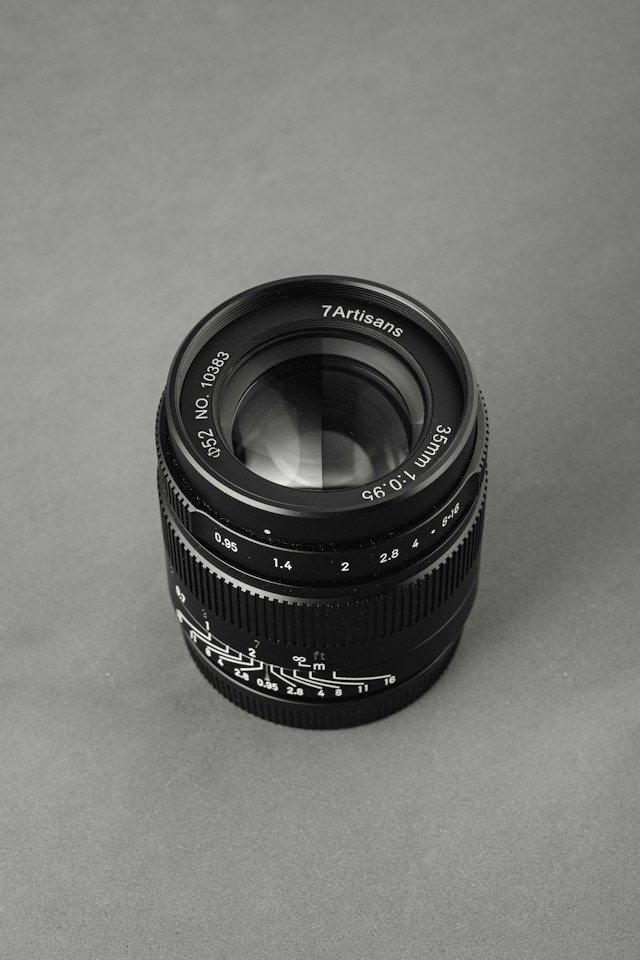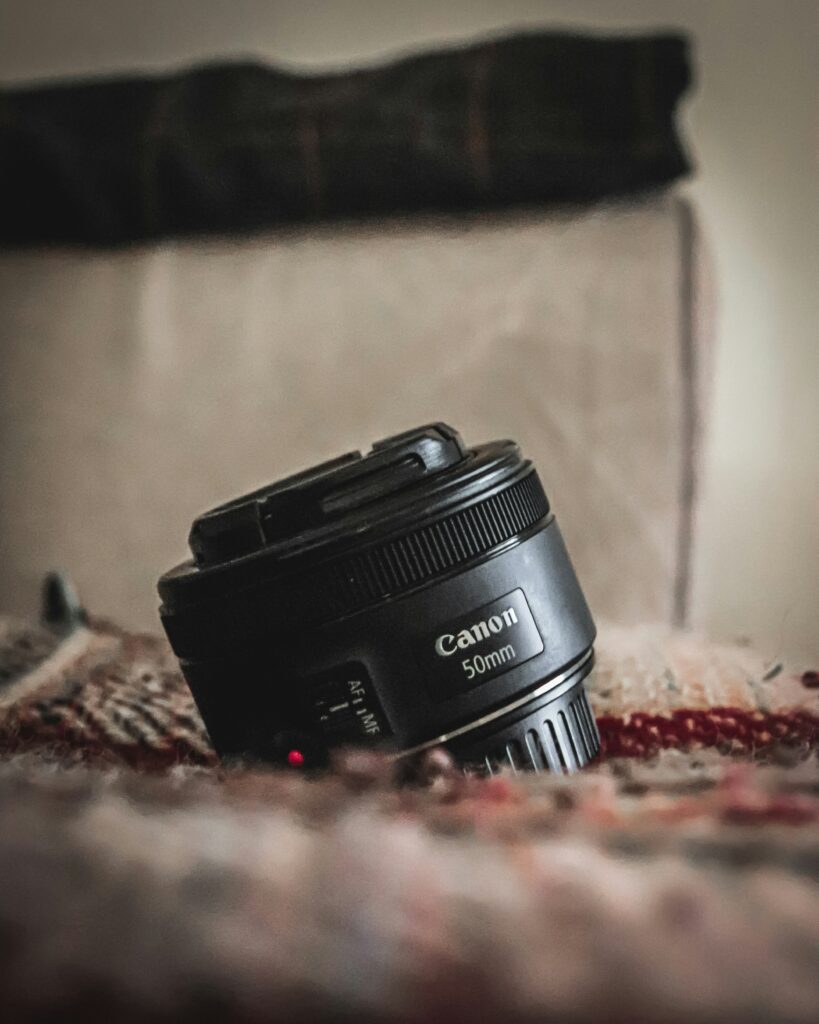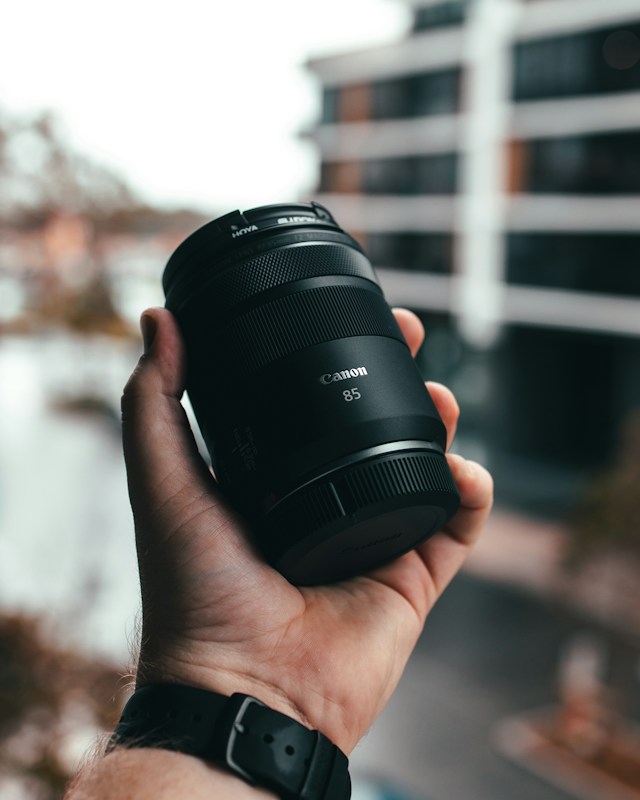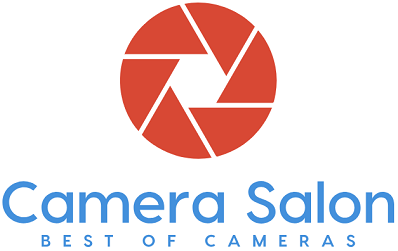What you want to shoot determines the difference between an 85mm vs 35mm vs 50mm lens. The 35mm allows you to capture a wide area or background to tell a story. The 85mm lens is the best choice for portraits or isolating your subjects. It creates a beautiful bokeh by blurring the background. 50mm, on the other hand, is a ‘standard’ and cheapest kind of prime lens. You can use it for wide-angle shots as well as creating bokeh and its performance falls somewhat in the middle of 35mm and 85mm lenses.
These are the three most popular focal lengths and all professional photographers have one of these lenses in their kit. 50mm lens is closest to a human eye in terms of angle of view. However, a 35mm lens is more realistic and has a naturally wide field of view. It is an all-around lens you can use for various purposes. The 85mm is ideal for portraits because of its longer zoom or focus compared to a 50mm lens.
Which is better, 35mm lens vs 50mm lens vs 85mm Lens?
Nothing is perfect in this world and the same is true for these lenses. Some photographers consider 50mm as the absolute best focal length while others love 35mm or 85mm. However, it is more of a personal choice and type of photography than anything else.
This article tries to explain what all these lenses can do for you, what are their advantages and disadvantages, and how to use them. We aim to help you make the right decision and buy the lens that you need for your next photography task.
What is a 35mm Lens Used for?

Although not a true wide angle lens, 35mm is of course, wider than both 50mm and 85mm. Therefore, you can use it in many situations ranging from wedding photography, group and environmental portraits, lifestyle, landscapes, and everything that requires a wider field of view. However, it is not as good as 85mm when it comes to isolating your subjects.
35mm Lens for Natural Photography
It is a perfect choice for capturing ‘natural’ photographs just as your eyes would see the subjects. Even though 50mm is the closest focal length to the human eye, we have two eyes, and the overlap of two 50mm lenses becomes somewhat closer to 35mm.
35mm Lens for Environmental Portraits
That is why many photographers use 35mm for environmental portraits or whenever they want to induce a more natural look in their photos. 85mm lens cannot deliver this effect because our eyes cannot separate background as much as 85mm.
35mm Lens for Weddings
One of the best applications of a 35mm lens is wedding photography. Having the same angle of view as your eye works great for a wedding. It also works wonderfully well for other ceremonies such as birthdays, baptisms, graduation ceremonies, etc.
35mm Lens for Travel and Lifestyle
35mm lens is also quite popular among many travel and lifestyle photographers. As compared to a 20mm or even wider lens, it seems less distorted. Still, it is wide enough to cover everything you need with lovely bokeh. You often have to shoot in tight places in case of travel and lifestyle, making it difficult to use 50mm or 85mm lenses. The latter will also diminish the background too much in this case.
35mm Lens for Street and Portrait Photography
35mm lenses also excel in street and landscape photography. 35mm is a more natural angle of view, making it a perfect choice for street photography. You can get beautiful street photographs if you can get close enough to your subject. Your street photos will look like an environmental portrait.
35mm cannot provide as much field of view or composition as an ultra-wide lens. Therefore, it is not as wide for landscapes as you would have liked. But – it is not bad at all. For example, even a selective view of the landscape can work wonders for you.
Advantages and Disadvantages of a 35mm Lens
Advantages of a 35mm Lens
35mm lens offers a lot of advantages such as:
Versatility
As mentioned above, 35mm is a versatile lens and can help you in many different situations ranging from landscapes to portraits, street photography, product photography, etc. It can capture perfect wide-angle shots and is best for photos where you have to include a greater field of view. In short, 35mm enables you to take the perfect shot regardless of your location.
Focal Length
35mm helps you capture the image most realistically or naturally. It also enables you to give vent to your creativity as it is like shooting with your own eyes.
Low Light Performance
You can lose light quite quickly while shooting outdoors and this is where a 35mm lens can come to your rescue. 35mm lenses usually have a wider aperture, allowing more light to enter the lens. The more the light enters the lens, the better will be the images in the low light.
Compact and Portable
35mm lenses are small, lightweight, and portable. You can easily carry them wherever you go without having any fatigue. It makes it the best lens for the outdoors, adventures, travels, etc.
35mm Captures Perfect Angles
35mm lenses shoot your subject perfectly no matter whether you are capturing portraits, landscapes, or nature. 35mm is not only deeply artistic but more natural than all kinds of lenses.
Disadvantages of a 35mm Lens
Just like advantages, 35mm lenses also have some disadvantages.
It is a Prime Lens
Just like all prime lenses, you cannot zoom in or out using a 35mm lens. Therefore, you cannot get closer to your subject, especially in the outdoors. You have to get close or away manually to achieve the desired effect. It is a big disadvantage for some photographers who like to get really close to their subjects to dramatically add effects or scenery in their photos.
Expensive
The best 35mm lenses, especially those with an extremely wide aperture such as F/1.4, are quite expensive. However, they are worth the money you spend.
How to Shoot with a 35mm Lens?
The following are a few tricks to take beautiful pictures with a 35mm lens.
Composition
Using a 35mm focal length requires you to be fully aware of your surroundings. It is impossible to fully remove the background using the background blur. You can wash out the background in the bokeh using wide apertures for extreme close-ups but not with 35mm. The background will be more prominent at this focal length. Therefore, you must use it to enhance your photos.
You have to plan your composition more thoughtfully and carefully. Keep both your subjects and background in mind while taking a photo. Your background should not just serve as a beautiful backdrop but it should become a part of the subject.
Low Light Performance
35mm lenses have wide apertures. They also have the widest focal length of all the lenses we are discussing here. It allows you to follow the reciprocal rule and keep your shutter speed to around 1/60th of a second. The lens can deliver good low light performance if you pair the shutter speed with an f/2 or wider aperture. The 35mm lens would be 1 1/3 and 2.3 stops brighter when compared to 85mm and 55mm lenses respectively at the same ISO and aperture.
Aperture
How your photos look greatly depends on the aperture as well. You cannot only control the amount of light entering the camera using the aperture but it also controls bokeh or background blur.
35mm or wider lenses offer little background blur if you are more than 5 meters away from your subject. You can narrow down the aperture if you have a lot of light to work with. It will help you get everything in focus. You can use contrast, color, light, and other techniques to separate your subject and still keep the background sharp enough.
What is a 50mm Lens Good for?

50mm has been the most revered focal length since the golden age of film photography. It was the kit lens for most film cameras. However, it is far from the truth that it is the most versatile lens in the world. No lens is perfect and the same is the case with 50mm. But – it has the highest number of variations just because it is very easy to design.
50mm does have its limitations but still, you can use it in many different situations.
50mm Lens for Environmental Portraits
A 50mm lens is a good choice for environmental portraits just like 35mm. it doesn’t offer the same performance in tight spaces. However, it delivers the natural feel and looks of a portrait and almost zero distortion. You can use either 35mm or 50mm for environmental portraits and it boils down to your personal preference.
50mm Lens for Portraits
50mm is one of the most widely used all-around lenses for portraits. Every portrait photographer has it in his kit. It offers a good degree of background blur and subject isolation at a wide aperture even for full-body shots. The facial features will be less extravagant since you are at a greater distance from your subject compared to a 35mm lens.
50mm Lens for Weddings
Both 50mm and 35mm lenses are equally great for weddings and similar ceremonies. However, 50mm is the way to go for important events and moments. It helps you single out someone or something such as a bride, the wedding cake, the first kiss, the dance, and so forth. You can use 50mm to shoot prominent personalities in other ceremonies too.
50mm for Street Photography
Experts like Henri Cartier-Bresson would strongly suggest using a 35mm lens for street photography. But – 50mm can come in handy for street photography when you don’t want to be noticed. You can position yourself away from the subjects and take photos without disturbing them as well.
50mm Lens for Landscapes
Even though wide-angle lenses are perfect for landscapes yet you can use 50mm for landscapes as well. Landscapes are the easiest type of photography in my opinion. You just have to choose the area you want to capture. 50mm lens enables you to focus on details instead of shooting the entire scene.
50mm Lens Advantages and Disadvantages
The merits and demerits of a 50mm lens are as below.
Advantages of a 50mm Lens
Depth of Field
The fast speed and wide aperture of a 50mm lens allow you to add depth of field to any photo. The subject looks highly attractive because the depth of field can bring it out of focus. The subject and the depth of field complement each other nicely.
Light and Speed
Most 50mm lenses have wide apertures and thus are quite fast. As a result, they excel in low-light conditions. In short, you would love to use a 50mm lens in the dark.
Compact
50mm lenses are tiny and compact. They are the best lenses for travel, outdoor, and adventure photography because of their minimal size and weight. The setup is also simple, making you take beautiful pictures on the go without any hassle.
Photo Quality
A 50mm lens is not quite as good as more expensive lenses. Yet, it can offer the picture quality you long for as an aspiring or amateur photographer. Similarly, it is the ideal choice for low light conditions and some other situations.
Disadvantages of a 50mm Lens
Zoom Feature
50mm is a prime lens and does not have any zoom. You have to move closer or away if the distance between you and your subject is too long or short respectively.
Composition
Composing can be a bit difficult with this lens. Even though it is the best lens for portraits yet you cannot capture all the features and elements of a scene in a single frame. You have to exclude some elements from the frame and work with the remaining to create a beautiful portrait picture.
How to Take Photos with a 50mm Lens?
The following are a few ways to use a 50mm lens for photography.
Composition
50mm is a bit more flexible than 35mm when it comes to composition though. It is better at compressing the background and offers more background blue compared to 35mm. It helps you remove an ugly or inferior background easily if you want to.
You can counter or negate greater subject isolation caused by a 50mm lens by moving a couple of steps back. It means you can blend the background and the subject without creating background blur. It is quite a nice technique when you don’t want any bokeh in your pictures.
Low Light Performance
50mm lenses with fast apertures such as f/1.8, f/1.4, or even wider are the best option for low light photography. Similarly, these lenses are quite cheap ranging from $100 to $400 depending on their aperture size.
However, you would use 1/100th of a second shutter speed in the case of a 50mm lens instead of 1/60th. It results in 2/3f stop darker images but the difference is acceptable in real life.
Aperture
50mm lens with a wide open aperture will isolate your subject from the background. But – it can work like a 35mm lens if you reduce the aperture a little bit. For example, have a distance of 5 meters from your subject and use an f/4 aperture to get most of your background in focus. You will have a reasonable background blur if you use a smaller aperture such as f/3.5 for close-up portraits.
What are the Uses of an 85mm Lens?

The 85mm lens is used for creating creamy bokeh and focusing primarily on your subject. It compresses the background more than both 35mm and 50mm lenses. Therefore, photographers mostly use 85mm lenses for subject separation.
85mm Lens for Portraits
85mm is widely used for commercial portraits including fashion and beauty photography, advertisements, and so on. You can capture environmental portraits but the results will not be good in tight spaces.
85mm Lens for Street Photography
85mm is also a good focal length for street photography. You can easily take candid shots of the streets because you will be far away from your subject. You can also take shots that are not possible with a 35mm or 50mm lens because 85mm allows you to be less noticeable.
50mm Lens for Weddings
Just like street photography, an 85mm lens is perfect for taking candid pictures of the bride and groom. If you are managing the entire wedding, you can take beautiful shots of the preparations as well.
Advantages and Disadvantages of an 85mm Lens
Advantages of an 85mm Lens
An 85mm lens has a lot of benefits such as:
Background Control
If you want to have full control over the photo’s background, you must use an 85mm lens. It is considered to be the best lens for portraits. The focal length helps you create creamy bokeh and isolate your subject better than any other type of lens.
Depth of Field
Both 35mm and 50mm cannot come close to 85mm in terms of depth of field. 85mm creates a more beautiful, detailed, and deep depth of field. It converts the background into something magical, resulting in spectacularly beautiful images.
Less Distortion
35mm or 50mm can result in exaggerated distortion or facial features. Portraits or close-ups taken with an 85mm lens have negligible facial distortion.
Disadvantages of an 85mm Lens
Some of the disadvantages of an 85mm lens are:
Slow Focus
It is difficult to focus on your subject using an 85mm lens, especially when the aperture is wide open. The focus performance is even poor when the conditions are not ideal. For example, you should choose another lens for focusing on moving objects.
Limited by Space
85mm lenses offer a deep depth of field, greater background compression, and an excellent focal length. However, it struggles intensely in tight spaces. For instance, shooting in tight indoors is quite problematic with an 85mm lens.
How to Use an 85mm Lens?
85mm lens requires you to be more patient and change your shooting style a bit. You can have problems communicating with your subjects or having a proper shoot during street photography due to the greater focal length.
Composition
An 85mm lens is best for composing photos. For example, it can easily remove a subpar background. Similarly, the background is not as important in photos where you fill the frame with the subject using an 85mm lens and a wide aperture. You need not wash out the background completely but you have more flexibility compared to 50mm and 35mm lenses.
For example, you can easily separate the subject from the background at f/2 because the latter is quite blurry even at this aperture.
Low Light Performance
85mm is not as good for low light as 50mm and 35mm lenses. If you apply the reciprocal rule, it has a shutter speed of 1/60th, making it a 2/3 f stops darker than a 50mm lens. For a 35mm lens, it is a further 2/3 stop darker.
However, it does not mean you cannot use it for low-light photography. For example, an 85mm f/1.8 lens offers exceptional performance in low light even if your camera has a low native ISO.
Aperture
You will considerably blur your background using an 85mm lens at a wide open aperture. You should use a wide open aperture such as f/1.4 carefully for portraits. The field of focus will be 1cm at this point. Therefore, it can result in improperly focused or soft images if the focus is not correct.
You can double or triple the field of focus by narrowing down the aperture to f/2 or f/2.8. It will increase your chances of having a properly focused photo.
You can completely blur the eyes if you miss the camera focus and focus on the nose and eye respectively at f/1.4.
85mm vs 50mm vs 35mm Lens – Which One to Use?
Well, it depends on your requirements, shooting style, and the situation. For example, an 85mm lens is the best camera lens for portrait photography. It minimizes the facial features and images taken by 85mm have the least amount of distortion.
50mm lens, on the other hand, is ideal for low light photography because of its fast apertures. Similarly, they are small and compact and become great travel buddies.
35mm lenses are perfect for landscapes as they cover a larger field of view. They are also a great choice for weddings and other events. You should also use a 35mm lens to get more natural photographs.
It doesn’t mean you cannot use a 35mm lens for portraits or a 50mm lens for landscapes. You can get the desired results by making some tweaks to the lenses and adjusting your shooting style.
35mm Lens vs 50mm Lens vs 85mm Lens – The Biggest Difference
There are many differences between these kinds of lenses but the biggest difference is, of course, the focal length.
The 35mm has the widest focal length. It can capture the entire scenery besides your subject. The 85mm lens has the narrowest focal length of these three lenses. Therefore, it beautifully blurs the background to highlight your subject. The 50mm lens is best for portraits because it offers the best of both worlds.
Frequently Asked Questions
Which is better 35mm or 85mm lens?
The choice between a 35mm and an 85mm lens depends on your photography needs. A 35mm lens is better for wide-angle shots and landscapes, while an 85mm lens is ideal for portraits and close-ups, providing a beautiful background blur or “bokeh.”
Which lens is better 50mm or 35mm?
Whether a 50mm or 35mm lens is better depends on your intended photography style. A 50mm lens is versatile, and suitable for general photography, while a 35mm lens is great for wider shots, capturing more of the scene.
What is 85mm lens best for?
An 85mm lens is best for portrait photography due to its narrow field of view and ability to create a pleasing background blur, isolating the subject and producing sharp, professional-looking portraits.
What is a 35mm lens used for?
A 35mm lens is commonly used for a variety of photography styles, such as street photography, documentary photography, and capturing group shots or environmental portraits. It provides a natural perspective and versatility.
Why is 35mm so special?
The 35mm lens is special because of its versatility and ability to capture scenes with a perspective close to what the human eye sees. It’s often considered a “standard” or “normal” lens, making it popular for various photographic styles, from landscapes to street photography.
Final Thoughts
So, you have been thinking about buying a new lens for your kit. But – you cannot decide between a 35mm, 50mm, or 85mm lens or cannot determine which one of them is best for you. In this article, we have explained the differences between these lenses and what each kind of lens is good for. You just need to read the entire article and you will figure out which lens you want and need.

